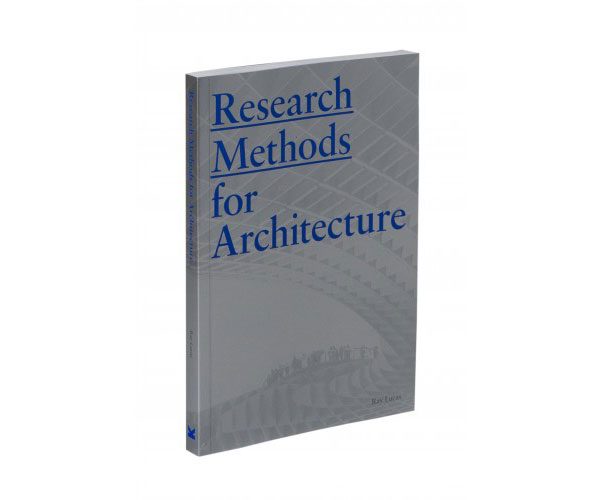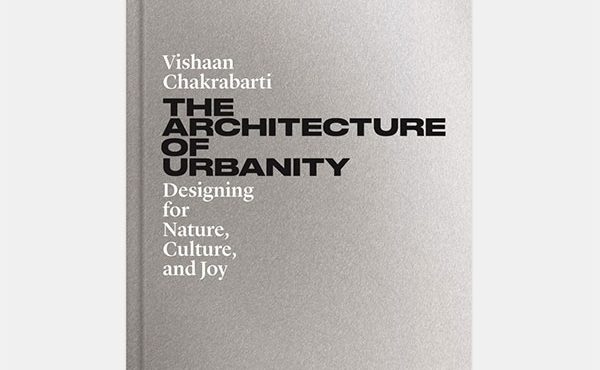
Author: Raymond Lucas (Laurence King, 2016)
“As a discipline, architecture often struggles with the idea of research…” It’s difficult to think of a more accurate opening statement to Ray Lucas’ Research Methods for Architecture. Given the everyday, physical nature of built world, it’s easy to assume that research within the profession of architecture would focus on the technological and technical side things, such as developing new construction techniques and systems or exploring the use of new materials. However, reflecting more critically on the architecture and the built environment, one quickly comes to realize the wide variety of ways it impacts on our lives, both individually and as a larger society.
Due to the complexity of the field, attempts at finding a single approach to researching architecture is doomed to fail: leading to the struggle so succinctly stated by Lucas in the first sentence of the book. Yet, this very same condition opens up exciting opportunities, as the multifaceted nature of the discipline underscores a wide variety of approaches available those interested in researching architecture…a variety that is captured in clear and easy-to-read prose within Research Methods for Architecture.
Being explicitly clear in his consideration of architecture as an extension of the humanities discipline (as differentiated from science), Lucas’ introduction What is architectural research? sets a brief but solid foundation for the subsequent two Parts—Fundamentals of Architectural Research and Practical Applications and Case Studies, respectively—that make up the book. This foundation includes critical vocabulary necessary (such as “Research”, “Theory”, “Practice” and “Practice-Based Research”), categories of research, the nature of proposing a thesis, framing history, social sciences and philosophy within the architectural discipline, as well as a wonderfully succinct breakdown of the structure of the book.
This lays the groundwork for the first Part that, as the outlined above, focuses on the fundamentals of conducting research and is divided into seven chapters—Defining your research question, Defining your research methodology, Building your literature review, Cross-disciplinary working, Conducting and documenting fieldwork, Conducting interviews and communication, and Writing up. Each of these is further divided into smaller subsections that, in tandem with Lucas’ succinct and accessible writing style, make the book very easy to navigate and use as a reference handbook.
Importantly, along with sharing some of the practical nitty-gritty of conducting research, such as research tools (sketchbooks and notebooks vs recording media, etc.), Part 1 includes many great references and books related to the topics in question—opening the door to people and research that one previously would not have known. In fact, I found a number of titles, myself, that I had never come across prior, including Albena Yaneva’s incredibly insightful and unique Made by the Office of Metropolitan Architecture: An Ethnography of Design.
Part 2: Practical Applications and Case studies, expands on the content of Part 1 through looking at specific research projects, how they were conducted and, consequently, how their methods of research influenced the outcomes. Each of its seven chapters are divided by research topic—Material Culture, Environmental Psychology, Architectural histories, The politics of space, Philosophy, phenomenology and the experience of place, Ethnographic research, and Drawings, diagrams and maps—delving into a brief, but very instructive description of the some of the main research and researchers within each topic prior to discussing a specific project, several of which Lucas was directly involved with.
The book ends nicely with a short conclusion that considers the connection between academic research and professional architectural practice, in the form of an interview with two architects—Robert Adam and Snøhetta’s Craig Dykers—who discuss research and how it informs their work.
In his introduction, Ray Lucas writes, “the book aims to discuss research as an expanded field of possibilities.” And in its easy, succinct writing style and breadth of information, Research Methods for Architecture does his words justice, contributing well towards easing the struggle he highlights at the beginning of the book. Students of architecture, interior design and urban design should read it and, as such, it deserves to be on the shelves of all academic and public library that seriously values researching the built world.
***
For more information on Research Methods for Architecture, visit the Laurence King website.
**
Erick Villagomez is one of the founding editors at Spacing Vancouver. He is also an educator, independent researcher and designer with personal and professional interests in the urban landscapes. His private practice – Metis Design|Build – is an innovative practice dedicated to a collaborative and ecologically responsible approach to the design and construction of places. You can see more of his artwork on his Visual Thoughts Tumblrand follow him on his instagram account: @e_vill1.




One comment
This book is currently on order at the Toronto Public Library but you can put a hold on it with your Library card:
http://www.torontopubliclibrary.ca/detail.jsp?Entt=RDM3425376&R=3425376